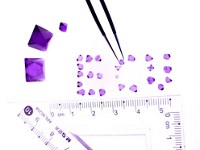Advertisement
Grab your lab coat. Let's get started
Welcome!
Welcome!
Create an account below to get 6 C&EN articles per month, receive newsletters and more - all free.
It seems this is your first time logging in online. Please enter the following information to continue.
As an ACS member you automatically get access to this site. All we need is few more details to create your reading experience.
Not you? Sign in with a different account.
Not you? Sign in with a different account.
ERROR 1
ERROR 1
ERROR 2
ERROR 2
ERROR 2
ERROR 2
ERROR 2
Password and Confirm password must match.
If you have an ACS member number, please enter it here so we can link this account to your membership. (optional)
ERROR 2
ACS values your privacy. By submitting your information, you are gaining access to C&EN and subscribing to our weekly newsletter. We use the information you provide to make your reading experience better, and we will never sell your data to third party members.
Environment
Beauty At The Lab Bench
C&EN’s 2011 photo contest draws gorgeous images from its readers
by Aaron A. Rowe
October 30, 2011
| A version of this story appeared in
Volume 89, Issue 44
In its second annual photo contest, C&EN asked scientists to send in photos of beautiful things that showed up on their lab benches. They submitted stunning images of crystals, snapshots of chromatography chambers, colorized electron microscope images, and much more. Winners were selected based solely on the strength of the image. Shown here are the top-rated contributions.
















Join the conversation
Contact the reporter
Submit a Letter to the Editor for publication
Engage with us on Twitter